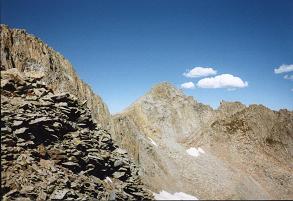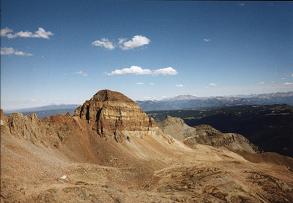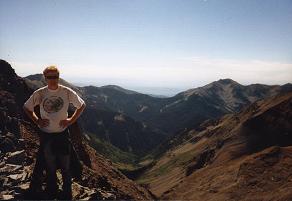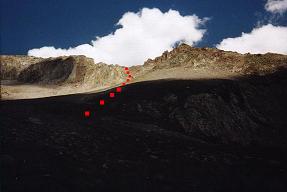
saddle just east of Mount Moss.

|
|
Lavender Peak from the 12,900 foot saddle just east of Mount Moss. |

|
|
Centennial Peak from the 12,900 foot saddle just east of Mount Moss. At photo left is the sharp, pinnacled Lavender Peak / Centennial Peak ridge. |

|
|
Tomahawk Basin from the high saddle just east of Mount Moss. Edward poses in the foreground. |

|
|
The 900 foot scree slope appears in sunlight, leading to a saddle just east of Mount Moss (at photo left). Our route leading to nowhere is indicated by the receding red squares. |